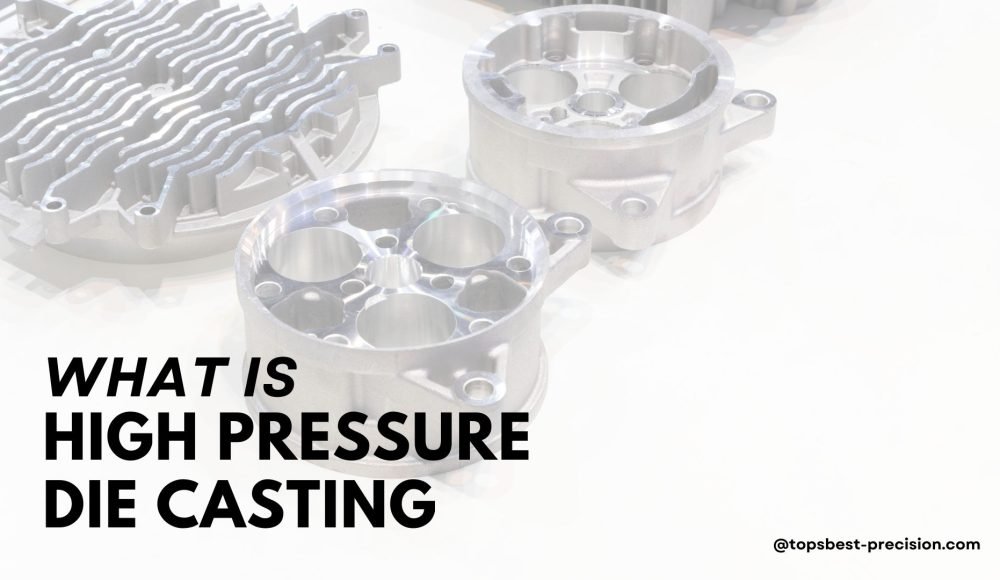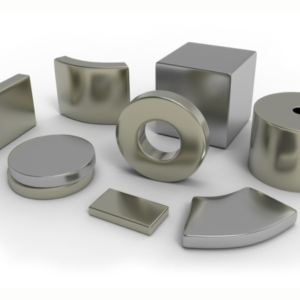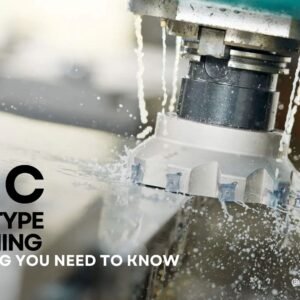High-pressure die casting (HPDC) is a widely used manufacturing process known for producing strong, leggero, and complex metal parts with high precision. It plays a crucial role in industries such as automotive, aerospaziale, and medical equipment manufacturing, where durability, precisione, and efficiency are essential.
This article provides an in-depth look at high pressure die casting (HPDC), including its working principles, vantaggi, applicazioni, and a comparison with low-pressure die casting (LPDC). Alla fine, you’ll have a clear understanding of whether this process is suitable for your manufacturing needs.
What is High-Pressure Die Casting?
High-pressure die casting is a process in which molten metal is injected into a steel mold (morire) ad alta pressione, ensuring rapid solidification and high precision. This process allows for the production of thin-walled, leggero, and structurally complex parts that are commonly used in industries such as automotive, aerospaziale, and medical manufacturing.
Key Characteristics of HPDC
- Usi high pressure (1,500 A 25,000 PSI)to inject molten metal into a die.
- Fast cooling and solidification result in high production rates.
- Produce complex and intricate shapes with excellent surface finishes.
- Reusable steel dies allow for cost-effective, produzione su larga scala.
History and Evolution of High-Pressure Die Casting
The origins of die casting date back to the mid-1800s, when it was primarily used in the printing industry to manufacture lead and tin type for presses. Col tempo, this technique evolved and was adopted by multiple industries.
Pietre miliari chiave
- Mid-1800s: First used for printing press components.
- Early 1900s: Expansion into other industries, the introduction of zinc and aluminum alloys.
- 1930S -Preresent: Adoption of more advanced alloys and automated die casting machines for mass production.
Oggi, HPDC is a leading manufacturing method for producing metal parts with superior strength and precision.
Designing the Perfect Mold for High-Pressure Die Casting
Creating a high-quality mold is one of the most critical steps in high-pressure die casting (HPDC). The mold determines the accuracy, durabilità, ed efficienza of the entire casting process. A well-designed mold not only ensures smooth production but also reduces defects, extends tool life, and lowers production costs.
Choosing the Right Mold Material
Since HPDC operates under intense pressure and heat, molds must be made from materials that are:
✅ Forte e resistente – To withstand repeated use without deformation.
✅ Resistente al calore – To survive extreme temperature cycles.
✅ Resistente all'usura - per ridurre al minimo i danni alla superficie ed estendere la durata dello strumento.
Common Mold Materials
- Acciaio per utensili H13- L'acciaio più comunemente usato per gli stampi HPDC dovuti alta durezza, resistenza al calore, e durata.
- Acciaio per utensili H11- Simile a H13 ma leggermente più duro e migliore per gli stampi di grandi dimensioni.
- Acciaio Maraging- Offre Superior Resistenza alla crepa ed è utile per progetti complessi.
A Aumenta la durata della vita della muffa, I produttori spesso si applicano trattamenti superficiali Piace nitriding o Rivestimenti PVD, che migliorano la resistenza all'usura e riducono l'attrito.
Key Mold Design Considerations
UN stampo ben progettato Garantisce un flusso di metallo liscio, raffreddamento più veloce, e facile espulsione della parte. Ecco alcuni fattori critici da considerare:
Proper Gate and Runner System
- IL cancello è il punto di ingresso in cui il metallo fuso scorre nella cavità.
- Corridori distribuire uniformemente il metallo fuso.
✅ Best practice:
- Utilizzo Cancelli multipli per parti grandi o complesse per evitare la turbolenza.
- Progetto transizioni graduali nei corridori per mantenere un flusso regolare.
Venting and Air Escape Paths
L'aria intrappolata può causare porosità (piccoli buchi all'interno della parte), indebolire il prodotto finale.
✅ Best practice:
- Aggiungere canali di sfiato per consentire alla fuga di gas intrappolati.
- Utilizzo Assistito a vuoto HPDC per migliore rimozione dell'aria in parti critiche.
Cooling System for Faster Solidification
Il raffreddamento efficiente migliora la qualità della parte e riduce il tempo di ciclo.
✅ Best practice:
- Canali di raffreddamento ad acqua o olio All'interno dello stampo aiuta a controllare la temperatura.
- Raffreddamento uniforme previene deformazione E Riduzione irregolare.
Ejection System for Easy Part Removal
Una volta che il metallo si solidifica, Pin di espulsione spingere la parte fuori dallo stampo. La cattiva progettazione di espulsione può causare attaccare, deformazione, o danni alla parte.
✅ Best practice:
- Utilizzo pin di espulsione multipla A Applica una forza uniforme attraverso la parte.
- Pin di espulsione angolato può aiutare con forme complesse.
Wall Thickness and Draft Angles
- Pareti sottili ridurre il peso ma deve essere abbastanza forte da gestire la pressione.
- Angoli di tiraggio(lievi tasso) impedire alle parti di rimanere bloccati nello stampo.
✅ Best practice:
- Angolo di tiraggio minimo: 1° a 3 ° per espulsione regolare.
- Spessore del muro: In genere 1-5 mm(varia in base al materiale).
Common Mold Defects and How to Prevent Them
Anche con un grande stampo, Alcuni difetti possono ancora verificarsi. Ecco come evitarli:
| Difetto | Causa | Soluzione |
| Porosità | Bolle aria/gas intrappolate | Migliorare lo sfiato, Utilizzare HPDC assistito dal vuoto |
| Crepe | Stress termico e raffreddamento rapido | Ottimizza il sistema di raffreddamento, Usa leghe migliori |
| Flash (Materiale extra sui bordi) | Alta pressione di iniezione o stampo disallineato | Regolare la pressione, Controllare l'allineamento dello stampo |
| Riempimento breve | Metallo insufficiente che raggiunge la cavità dello stampo | Aumentare la velocità di iniezione, Migliora il design del gating |
How Does High-Pressure Die Casting Work?
Il processo HPDC è costituito da cinque fasi principali: Preparazione della muffa, iniezione, Solidificazione e raffreddamento, Parte di espulsione e post-elaborazione.
Fare un passo 1: Preparazione della muffa - Prepararsi a lanciare
Prima di ogni altra cosa, lo stampo (Chiamato anche "muore") deve essere pulito e lubrificato.
- Pulizia: Rimuove qualsiasi metallo rimanente dal ciclo precedente.
- Lubrificazione: Aiuta a controllare la temperatura dello stampo e rende più facile rimuovere la parte finita.
Pensavi come Ingoiando una teglia prima di versare la pastella per torta—Sta impedisce di attaccarsi e aiuta con un risultato uniforme!
Fare un passo 2: Iniezione di metallo fuso - riempire lo stampo sotto pressione
Ora è il momento di farlo iniettare il metallo fuso Nel dado ad alta velocità e pressione. Ma prima, Il metallo deve essere riscaldato fino a quando non è completamente liquido. IL Tipo di metallo usato dipende dalla parte che viene fatta, Ma le scelte comuni includono:
- Alluminio- leggero e forte (Utilizzato in auto e aerospaziale).
- Zinco- Eccellente per dettagli fini (Utilizzato in elettronica e prodotti di consumo).
- Magnesio- Molto leggero ma resistente (Utilizzato in strumenti medici e aerospaziale).
IL processo di iniezione può accadere in due modi, A seconda del metallo:
- Iniezione di camera calda(per metalli a basso fusione come zinco e magnesio)
- Il sistema di iniezione si trova dentro il metallo fuso, fare il processo veloce ed efficiente.
- Cold Chamber Injection(per metalli ad alto fusione come alluminio e ottone)
- The molten metal is poured separately into a chamber before being injected into the mold.
Regardless of the method, IL molten metal is pushed into the mold under extreme pressure—up to 25,000 PSI!
- Questo high pressure ensures that even the smallest details are perfectly formed.
- The metal spreads quickly through the mold, filling all corners before it starts to cool.
Fare un passo 3: Solidificazione e raffreddamento – Turning Liquid into Solid
Once inside the mold, il metallo fuso cools and solidifies almost instantly.
- The mold is made of acciaio, Quale absorbs heat quickly, helping the metal harden fast.
- Some molds have built-in cooling channels that circulate water or oil to speed up the process.
The entire cycle—from injection to solid part—can happen in just a few seconds to a minute, making HPDC one of the fastest manufacturing methods out there!
Fare un passo 4: Parte di espulsione – Removing the Solid Metal Piece
Dopo che il metallo si è completamente solidificato, È tempo di rimuovere la parte dallo stampo.
- Lo stampo si apre, E Pin di espulsione spingere delicatamente la parte.
- Queste spille impediscono alla parte di rimanere bloccate e aiutarla a scoppiare senza intoppi.
Se hai mai usato un vassoio cubo di ghiaccio, Pensa a come si preme sul retro per rilasciare i cubetti di ghiaccio: è un'idea simile!
Fare un passo 5: Trimming and Finishing – Cleaning Up the Part
A questo punto, La parte metallica è Quasi pronto—Ma ha ancora del materiale extra attaccato.
- Piccoli pezzi di metallo rimanente, chiamato flash, forma dove si incontrano le metà della muffa.
- Questo flash è rifinito Utilizzando strumenti speciali o toccando le parti in una macchina.
- Alcune parti possono anche passare attraverso Ulteriori passaggi di finitura, ad esempio:
✅ Lucidatura- Per appianare i bordi grezzi.
✅ Placcatura o rivestimento - Per migliorare la resistenza alla corrosione.
✅ Dipingere o anodizzare - Per un aspetto migliore e durata.
Camera calda vs. Cold Chamber Injection
Let’s break down the differences in a simple table so you can quickly see which method is best for your casting needs.
Comparison of Hot Chamber and Cold Chamber Injection
| Caratteristica | Iniezione di camera calda 🔥 | Cold Chamber Injection ❄️ |
| Come funziona | Il sistema di iniezione si trova dentro il metallo fuso, pulling liquid metal directly into the mold. | The molten metal is poured separately into a chamber, then injected into the mold. |
| Best for Metals | Low-melting metals like zinco, magnesio, and lead. | High-melting metals like alluminio, ottone, e rame. |
| Velocità | Faster process because the metal is already in the system. | Slower because metal must be manually or automatically ladled into the chamber before injection. |
| Pressure Range | Usi lower injection pressure (about 1,500–5,000 PSI). | Usi higher injection pressure (about 10,000–25,000 PSI) to push thicker metals into the mold. |
| Mold Life | Longer mold lifespan due to lower temperature differences. | Shorter mold lifespan due to exposure to higher heat and pressure. |
| Complessità della parte | Ottimo per piccolo, parti dettagliate with fine features. | Better for più grande, stronger parts that need durability. |
| Efficienza energetica | More efficiente dal punto di vista energetico Perché mantiene il liquido metallico all'interno della macchina. | Usi più energia Dal momento che il metallo deve essere messo a fusione separatamente. |
| Applicazioni comuni | Piccoli componenti come custodie elettroniche, parentesi, e dispositivi di fissaggio. | Parti pesanti come blocchi motore, componenti strutturali, e parti aerospaziali. |
Quale dovresti scegliere?
- Scegli la camera calda Se stai lavorando con metalli a bassa eliminazione e bisogno produzione veloce con dettagli elevati.
- Scegli la camera fredda Se stai usando Metalli ad alto fusione che è necessario resistere forze forti e usura.
Entrambi i metodi sono ampiamente utilizzati nella produzione, e scegliere quello giusto dipende il tipo di metallo, Dimensione parte, e velocità di produzione hai bisogno.
Vantaggi della pressofusione ad alta pressione
1. High Production Efficiency
- HPDC consente tempi di ciclo rapidi, rendendolo ideale per produzione di massa.
- Più veloce di Casting da dado a bassa pressione E Casting di gravità.
2. Excellent Dimensional Accuracy
- Produce parti ad alta precisione con requisiti di lavorazione minimi.
- Ideale per applicazioni automobilistiche e aerospaziali, dove sono essenziali tolleranze strette.
3. Finitura superficiale liscia
- Si traduce iniezione ad alta pressione trame di superficie fini, Ridurre la necessità di ulteriori finiture.
- Fa placcatura e pittura
4. Ability to Produce Thin-Walled Components
- HPDC può creare parti a parete sottile (<0.40 spessore mm), Ridurre l'utilizzo e il peso del materiale.
- Spesso usato in leggero applicazioni automobilistiche e aerospaziali.
5. Forza e durata
- Produce stronger parts Rispetto ad altri metodi di fusione.
- Ideale per i componenti esposti a elevata sollecitazione meccanica.
6. Efficacia dei costi
- IL Riusabilità degli stampi E produzione ad alta velocità Rendi HPDC economico per la produzione su larga scala.
- Meno materiale di scarto, Come può essere lo scarto metallico riciclato.
Applicazioni della pressofusione ad alta pressione
HPDC è ampiamente utilizzato in più settori a causa della sua capacità di produrre di alta qualità, durevole, e componenti leggeri.
Industria automobilistica
- Blocchi motore
- Involucri di trasmissione
- Componenti strutturali
- Pozzetti e supporti
Industria medica
- Strumenti chirurgici
- Involucri di attrezzatura di imaging
- Componenti della pompa di infusione
Industria aerospaziale
- Componenti strutturali leggeri
- Parti del motore dell'aeromobile
- Parentesi e alloggi
Other Applications
- Elettronica di consumo
- Apparecchi di illuminazione
- Elettrodomestici
High-Pressure Die Casting vs. Casting da dado a bassa pressione
| Caratteristica | HPDC | LPDC |
| Pressure Range | 30-70 MPa | 0.08-0.15 MPa |
| Velocità di produzione | Molto veloce, Ideale per la produzione di massa | Più lentamente, adatto a grandi componenti |
| Precisione | Precisione ad alta dimensione | Precisione moderata |
| Finitura superficiale | Eccellente | Richiede ulteriori finiture |
| Porosità interna | Possibile, ma controllato | Bassa porosità |
| Applicazioni tipiche | Settore automobilistico, aerospaziale, medico | Componenti strutturali, grandi getti |
Choosing a High-Pressure Die Casting Service
Quando si seleziona un produttore per HPDC, considerare:
- Esperienza & competenza nel casting dado.
- Compatibilità materiale(alluminio, zinco, magnesio, ecc.).
- Capacità produttiva E tempi di consegna.
- Processi di controllo di qualità(Certificazioni ISO, capacità di test).
- Costo-efficacia Per la tua scala di produzione.
Massima precisione: servizi personalizzati di pressofusione ad alta pressione
Massima precisione garantisce grande affidabilità nel collaborare con ingegneri specializzati nella pressofusione. Il nostro team esperto ci permetterà di dare ai nostri clienti, le raccomandazioni necessarie e l'aiuto nella scelta della tecnica giusta per il progetto. Dotato di strumenti e attrezzature moderne, produciamo prodotti di qualità in modo efficace. È veloce con TAT brevi e preventivi online rapidi che migliorano la tua esperienza. Inoltre, i nostri ingegneri forniscono un progetto gratuito per la producibilità (DFM) controlla quando carichi il file di progettazione. Forniamo servizi a valore aggiunto a un costo ragionevole.
Domande frequenti
Q1. Qual è il tempo di ciclo normale della pressofusione ad alta pressione?
I tempi di ciclo per la pressofusione ad alta pressione sono intermedi 15 E 60 secondi a seconda del design e delle dimensioni della parte. A causa di questa rapida inversione di tendenza, il sistema è particolarmente adatto per la produzione di grandi volumi.
Q2. Qual è lo spessore comune della parete quando si utilizza questo processo?
Utilizzando la pressofusione ad alta pressione, è possibile ottenere uno spessore della parete minimo 0.5 mm, pur mantenendo l'elevata resistenza del componente.
Q3. In che modo la pressofusione ad alta pressione influisce sulle proprietà meccaniche?
Le proprietà meccaniche delle parti pressofuse ad alta pressione sono superiori a quelle delle parti pressofuse in sabbia; la resistenza allo snervamento varia da 200 A 300 MPa e resistenza alla trazione variano da 250 A 400 MPa a seconda del tipo di lega utilizzata.
Q4. Quale percentuale di scarti viene normalmente prodotta nella pressofusione ad alta pressione?
Anche il processo di produzione è molto efficiente, con scarti inferiori a 5%, principalmente a causa di rifilature ed eccesso di materiale, che possono essere reimmessi nel ciclo produttivo.
Q5. In che modo la temperatura dello stampo influisce sul processo di fusione?
È importante mantenere la temperatura dello stampo nell'intervallo di 180 A 300 C per risultati migliori. I tempi di raffreddamento sono più lunghi a temperature più basse, e la finitura superficiale è migliore a velocità di raffreddamento più elevate. Tuttavia il calore eccessivo può essere problematico per la precisione dimensionale.
Q6. Gamma di pressioni di pressofusione ad alta pressione
La pressofusione ad alta pressione funziona tipicamente a pressioni che vanno da 1,500 A 30,000 psi. Questa alta pressione consente al metallo fuso di riempire lo stampo in modo rapido e uniforme.




2 pensieri su "Cos'è la pressofusione ad alta pressione? Una guida completa”